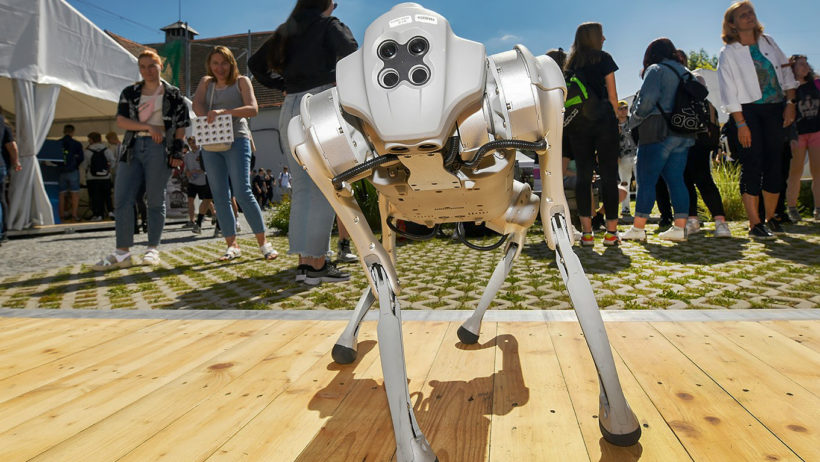Our Services
Robotic dog – practice-led development
We have been working on the integration of our robotic dog Unitree GO1 into the IZS (Integrated Rescue System) services for some time now. Drony SIT are currently cooperating mainly with the Czech Police Task Force on model trainings. Thanks to this experience, we gain indispensable information for further development and modification of the robodog.
Robodog’s lighting
When testing the robotic dog in a dark tunnel, the need for additional, remotely controlled lighting was obvious. This task seemed easy at first glance, but the opposite was true. A major limitation here was the size of the additional headlight. The robotic dog has the ability to roll over on its own in the event of a collision where it ends up on its back, and therefore the headlight must not extend too far above the head structure where it could impede the process of automatically rolling back onto its feet. At the same time, it must be powerful enough to illuminate the area in question and another factor is the positioning of the dog’s frontal cameras and ultrasonic sensors, which must also not be restricted. Several LED lighting designs were therefore considered, which resulted in two prototypes for testing. The total power of the LED lighting was considered to be somewhere around 20W when powered from the dog’s battery, which has a voltage of just under 22V.
The first version of the headlight:
This consists of six LEDs, each 3W (total power 18W) connected in series. This version has the advantage of spreading the light sources evenly around the perimeter of the headlamp and in particular there is no need for additional cooling, but this comes at the cost of lower light output. Individual lower power LEDs are better cooled than large LED arrays and by combining them appropriately we can achieve an overall performance similar to the high power ones.
The second version of the headlight
For the second headlight, two high power LEDs of 10W each (20W total power) connected in series were chosen. These must already be supplemented with a minimum passive heat sink, which is due to the current of around one ampere. Already during testing it was obvious that the great luminosity is bought by a large amount of heat loss, and the passive heatsink will have to be expanded beyond a size unacceptable to us, or the existing one supplemented with active cooling by a fan. Switching of the headlight will be via a relay module (high trigger), which will be controlled by a Raspberry microcomputer that is embedded in the robodog. Both headlights can be fixed on the bumper, which is another of our designs and increases the operational possibilities of the robodog in real use.
Front bumper
We started to think about some form of protection for the robodog after the first tests with the Czech Police. Due to the contemplated deployment with the task force, the requirement arose whether the robot could open doors or remove other forms of obstacles. Such a requirement, however, entails the need for protection, especially of the robodog’s head. For this reason, we developed a bumper that we 3D printed from Onyx, a very strong nylon-based composite material. The bumper also features two absorption zones made of a softer TPU material that should absorb all the force of the impact. The bumper is fully removable and installation is very quick and easy.
Drones in use

Unitree Go1 EDU
Every new contract for us always has the same and only goal - success and a maximally satisfied client.
Contact us




